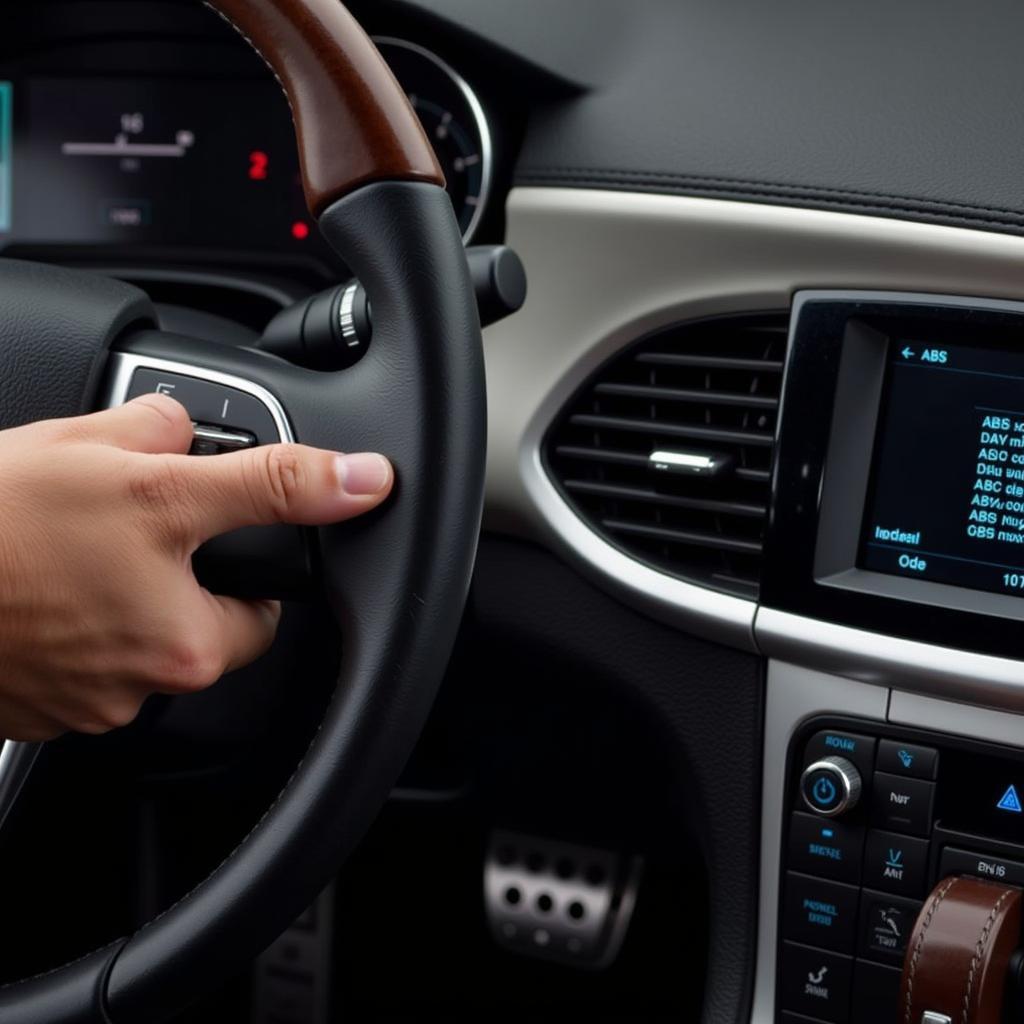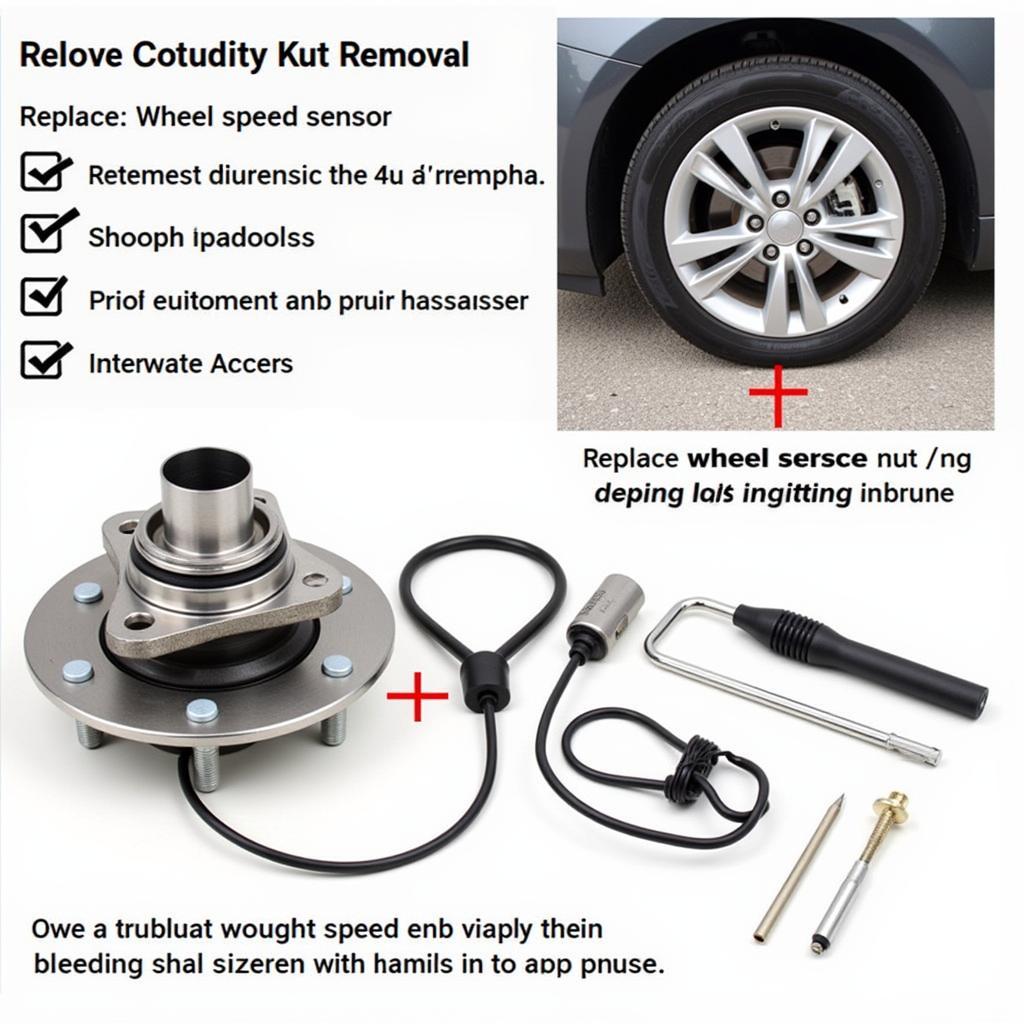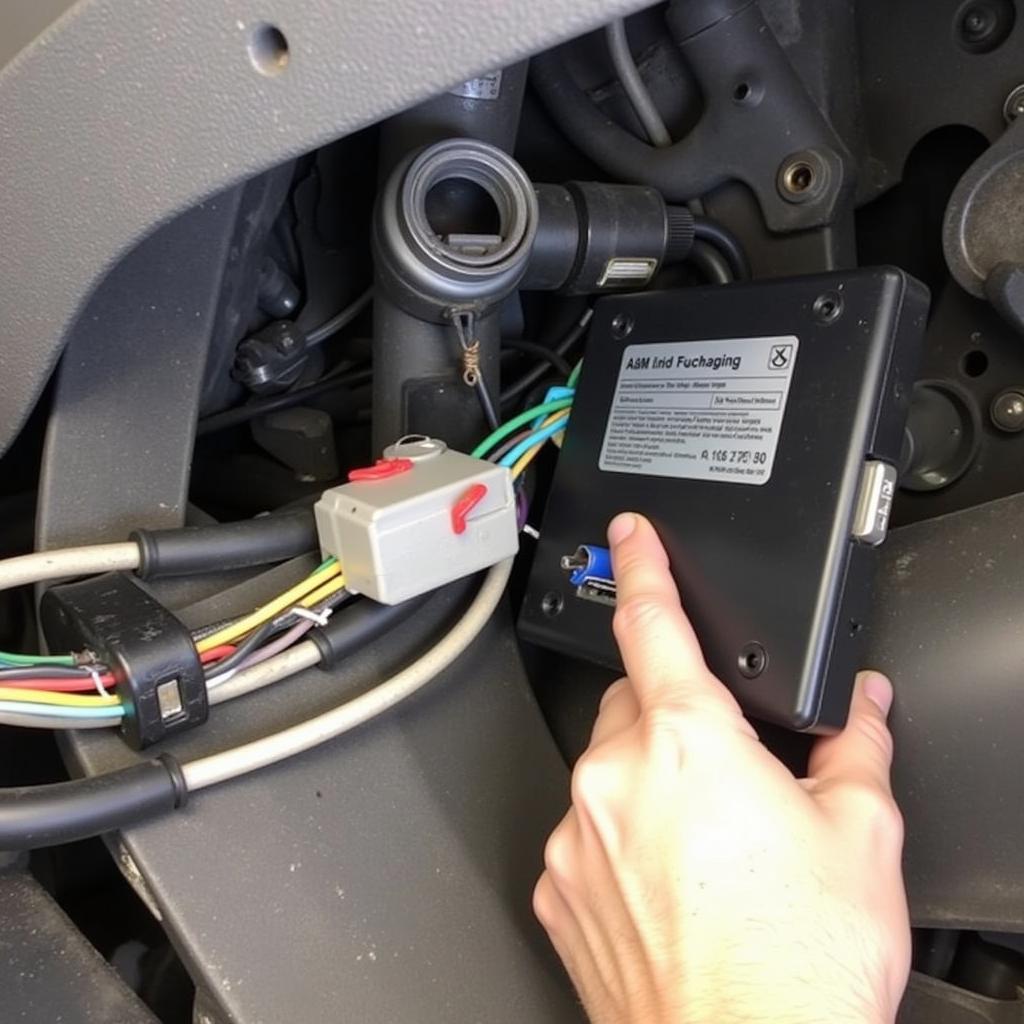The anti-lock brake warning light (ABS light) on your 2013 Buick Lacrosse can be a frustrating and potentially dangerous issue. Understanding why this light illuminates and how to address it is crucial for maintaining your vehicle’s safety and performance. This article will guide you through the common causes, diagnostic procedures, and potential solutions for the 2013 Buick Lacrosse anti-lock brake warning light.
One potential cause relates to brake components, like the ones discussed in articles about converting old Warner brakes. Check out this resource on converting old Warner brakes to new drums.
Common Causes of the ABS Warning Light
Several factors can trigger the ABS warning light in your 2013 Buick Lacrosse. These range from simple issues like a low brake fluid level to more complex problems involving the ABS module itself.
- Low Brake Fluid: One of the most common and easily remedied causes is low brake fluid. Check your brake fluid reservoir and top it off if necessary. If the fluid level drops again quickly, you may have a leak in your brake system, requiring professional attention.
- Faulty Wheel Speed Sensor: The ABS relies on wheel speed sensors to detect wheel lockup. A malfunctioning sensor can send inaccurate data to the ABS module, triggering the warning light.
- ABS Module Issues: The ABS module is the brain of the anti-lock brake system. Internal faults within the module can lead to a variety of issues, including the illumination of the warning light.
- Damaged Wiring or Connectors: Corrosion, damage, or loose connections in the wiring harness can disrupt communication between the ABS components and the module, causing the warning light to come on.
After checking fluid levels, considering transmission types and their associated brake systems can be informative. For instance, here’s a helpful article on Borg Warner transmission with drum brakes.
Diagnosing the Problem
Proper diagnosis is crucial to effectively address the ABS warning light. While some issues, like low brake fluid, can be visually inspected, others require more advanced diagnostic tools.
Using an OBD-II Scanner
An OBD-II scanner is a valuable tool for retrieving diagnostic trouble codes (DTCs) from your vehicle’s computer. These codes pinpoint the specific area of the ABS system experiencing a problem.
Checking Wheel Speed Sensors
A multimeter can be used to test the resistance of the wheel speed sensors. Comparing the readings to manufacturer specifications can help identify a faulty sensor.
Inspecting Wiring and Connectors
Visually inspect the wiring harness for any signs of damage, corrosion, or loose connections. A continuity tester can be used to verify the integrity of the wiring.
 Using an OBD-II Scanner on a 2013 Buick Lacrosse
Using an OBD-II Scanner on a 2013 Buick Lacrosse
Solutions and Repairs
Once you’ve diagnosed the problem, the appropriate repair can be carried out. Some solutions are straightforward, while others require professional expertise.
Addressing Low Brake Fluid
Topping off the brake fluid is a simple fix, but persistent low fluid levels indicate a leak that needs professional repair.
Replacing Wheel Speed Sensors
Faulty wheel speed sensors typically need to be replaced. This involves removing the wheel and accessing the sensor mounted on the hub.
Repairing or Replacing the ABS Module
ABS module issues can sometimes be resolved by repairing internal components or updating the module’s software. However, a complete module replacement may be necessary in some cases.
Fixing Wiring and Connector Problems
Damaged wiring or connectors can often be repaired by cleaning corroded contacts, tightening loose connections, or replacing damaged sections of the wiring harness.
Understanding the components of trailer brake systems can also be helpful. Here’s a guide to Warner Electric trailer brake parts.
 Replacing a Wheel Speed Sensor on a 2013 Buick Lacrosse
Replacing a Wheel Speed Sensor on a 2013 Buick Lacrosse
Why is my ABS light on?
The ABS light can illuminate for various reasons, including low brake fluid, faulty wheel speed sensors, or problems with the ABS module itself.
How do I fix my ABS light?
Fixing the ABS light depends on the underlying cause. It may involve topping off brake fluid, replacing a sensor, or addressing issues with the ABS module. A diagnostic scan is recommended.
Can I drive with the ABS light on?
While you may still be able to brake, driving with the ABS light on is not recommended. Your anti-lock braking system may not function correctly, increasing the risk of skidding during hard braking.
“Ignoring your ABS warning light can be a risky move,” cautions automotive expert, Robert Thompson. “It’s crucial to address the underlying issue promptly to ensure your vehicle’s safety and prevent potential accidents.”
 Inspecting the ABS Module on a 2013 Buick Lacrosse
Inspecting the ABS Module on a 2013 Buick Lacrosse
For those interested in trailer brake controllers, here’s some information on the Warner Electric trailer brake controller.
Conclusion
The 2013 Buick Lacrosse anti-lock brake warning light signals a potential problem with your vehicle’s braking system. Addressing this issue promptly is crucial for ensuring your safety and preventing further damage. While some fixes, like adding brake fluid, can be done easily, others require professional diagnosis and repair. Don’t ignore this vital warning; take action to restore your Buick Lacrosse’s braking system to optimal performance. If you’re working with tension brakes, this resource on Warner tension brake might be helpful.
FAQ
-
What does the ABS light mean? The ABS light indicates a problem with your Anti-lock Braking System.
-
Is it safe to drive with the ABS light on? It’s not recommended, as your ABS might not function properly.
-
How much does it cost to fix the ABS light? The cost depends on the cause and can range from a simple fluid top-up to more expensive repairs.
-
Can I fix the ABS light myself? Some simple fixes can be DIY, but more complex issues require professional help.
-
What are the most common causes of the ABS light coming on? Low brake fluid, faulty wheel speed sensors, and ABS module problems are common culprits.
-
How do I diagnose the ABS light? Use an OBD-II scanner to retrieve diagnostic codes, which can pinpoint the issue.
-
Where is the ABS module located? The ABS module location varies by vehicle, but it’s often found near the master cylinder or under the hood.

